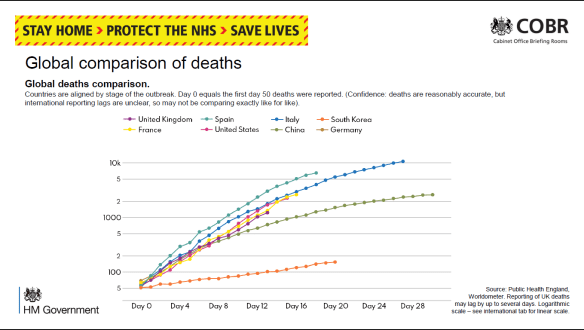Data in Society: Challenging statistics in an age of globalisation … editors Jeff Evans, Sally Ruane, and Humphrey Southall; Policy Press, 2019.
It is 20 years since the publication of the last Radical Statistics collection, Statistics in Society (1999), and even longer since Demystifying Social Statistics (1979). This third collection of chapters produced under the auspices of Radical Statistics will be published by Policy Press in August 2019.
The use of both ‘statistics’ and ‘data’ in the title is to capture the tension between two views of the materials, the methods and the professional and disciplinary basis of our work: the statistical data, statistical analysis,and the statistics and allied professions / disciplines, on the one hand; and ‘data’ (sometimes ‘big’), data analytics, and data scientists, on the other. The aims of the book include:
to explore ongoing developments in the uses of data and the role of statistics in today’s society, including the increasing diversity of data producers beyond the state, notably private corporations, especially those based on social media and new technologies;
to raise levels of critical understanding in terms of the role and significance of statistical data and statistical claims, and to invite a wider public of non-specialist readers, including third sector, professional and service user groups;
to consider how statistics are used in social discourse and debate, to advance interests and to achieve particular, often political, ends.
The audience for the book will include: teachers, researchers and students in applied statistics, and in research methods for a range of social science, health and business areas; those training or practising in areas such as social work, youth and community work, teaching and nursing; community activists and others using statistics as a campaigning tool and wanting to critically understand their use by others; and, of course, members and allies of the Radical Statistics Group.
Most higher education and training courses for the groups above include an introduction to the use of statistics. The introduction of Q Step programmes to enhance the level of teaching of quantitative methods to social science undergraduates in UK Universities has led to an increased emphasis on quantitative material across the whole range of social sciences and related fields, in undergraduate and taught post-graduate programmes. A number of the chapters here include clear signposts to the date used in their analyses.
Throughout its gestation, the book has benefited from the support of Radical Statistics and its members. Early planning meetings and travel to face-to-face Editors’ meetings were supported by the Radical Statistics Troika. Throughout, appeals to members, allies, and the mailing list have elicited valuable help, including reviewing of chapters. We thank everyone who has supported the book’s development, and look forward to your participation in the arguments that we hope will be stimulated by the book.
The contents of the book are as follows.
Foreword Danny Dorling, and Preface the Editors
Introduction Humphrey Southall, Jeff Evans and Sally Ruane
Part 1: How Data are Changing Introduction: Humphrey Southall and Jeff Evans
Statistical work: the changing occupational landscape Kevin McConway
Administrative data: The creation of Big Data Harvey Goldstein and Ruth Gilbert
What’s new about Data Analytics? Ifan Shepherd and Gary Hearne
Social media data Adrian Tear and Humphrey Southall
Part 2: Counting in a Globalised World Introduction: Sally Ruane and Jeff Evans
Adult Skills Surveys and Transnational Organisations: Globalising Educational Policy Jeff Evans
Interpreting survey data: Towards valid estimates of poverty in the South Roy Carr-Hill
Counting the Population in Need of International Protection Globally Brad Blitz, Alessio D’Angelo and Eleonore Kofman
Tax justice and the challenges of measuring illicit financial flows Richard Murphy
Part 3: Statistics and the Changing Role of the State Section Introduction: Sally Ruane and Humphrey Southall
The control and ‘fitness for purpose’ of UK Official Statistics David Rhind
The statistics of devolution David Byrne
The uneven impact of welfare reform Tina Beatty and Steve Fothergill
‘From ‘Welfare’ to ‘Workfare’ – and Back Again? Social Insecurity and the Changing Role of the State’ Christopher Deeming and Ron Johnston
Access to data and NHS privatisation: reducing public accountability Sally Ruane
Part 4: Economic Life Section Introduction: Humphrey Southall and Jeff Evans
The ‘distribution question’: Measuring and evaluating trends in inequality Stewart Lansley
Changes in working life Paul Bivand
The Financial System Rebecca Boden
The difficulty of building comprehensive tax avoidance data Prem Sikka
Tax and spend decisions: did austerity improve financial numeracy and literacy? David Walker
Part 5: Inequalities in Health and Well-being Introduction: Sally Ruane and Humphrey Southall
Health divides Anonymous
Measuring social well-being Roy Carr-Hill
Re-engineering health policy research to measure equity impacts Tim Doran and Richard Cookson
The Generation Game: Ending the phoney information war between young and old Jay Ginn and Neil Duncan-Jordan
Part 6 : Advancing social progress through critical statistical literacy Introduction Jeff Evans, Sally Ruane, and Humphrey Southall
The Radical Statistics Group: Using Statistics for Progressive Social Change Jeff Evans and Ludi Simpson
Lyme disease politics and evidence-based policy-making in the UK Kate Bloor
Counting the uncounted: contestations over casualisation data in Australian universities Nour Dados, James Goodman and Keiko Yasukawa
The Quantitative Crisis in UK Sociology Malcolm Williams, Luke Sloan and Charlotte Brookfield
Critical Statistical Literacy and Interactive Data Visualisations Jim Ridgway, James Nicholson, Sinclair Sutherland and Spencer Hedger
Full fact: What a difference a dataset makes? Amy Sippitt
Data journalism and/as data activism Jonathan Gray and Liliana Bounegru
Epilogue Jeff Evans, Humphrey Southall and Sally Ruane





 February is upon us! If you’ve not had the chance, please note that you can still book a space for the Radical Statistics conference to be held on Friday, February 24th 2012
February is upon us! If you’ve not had the chance, please note that you can still book a space for the Radical Statistics conference to be held on Friday, February 24th 2012